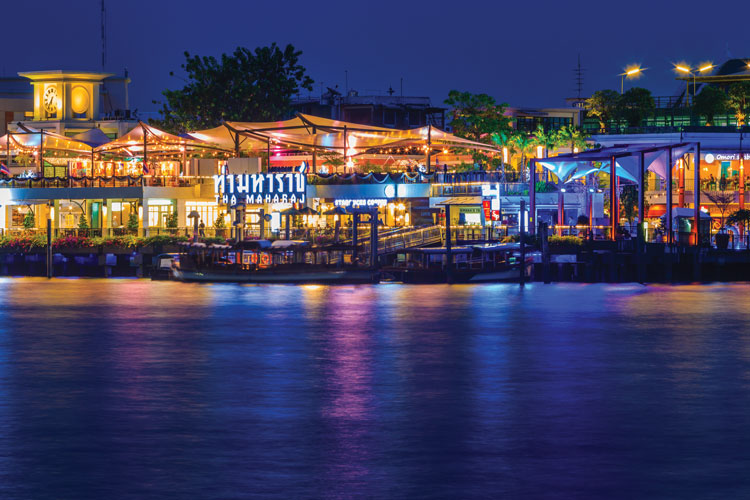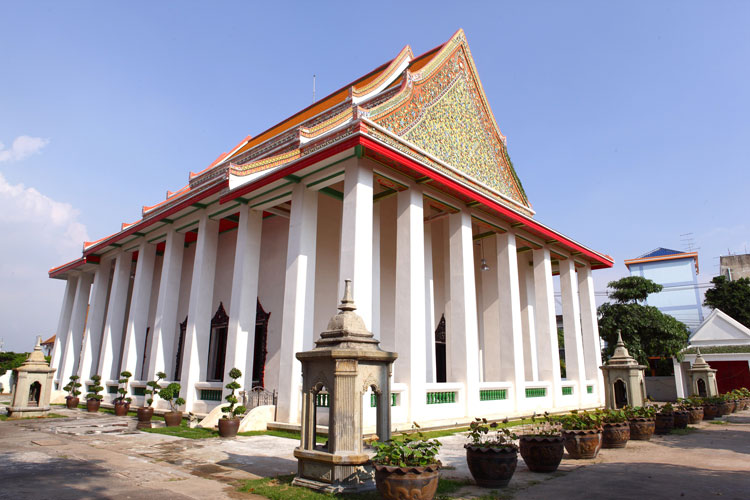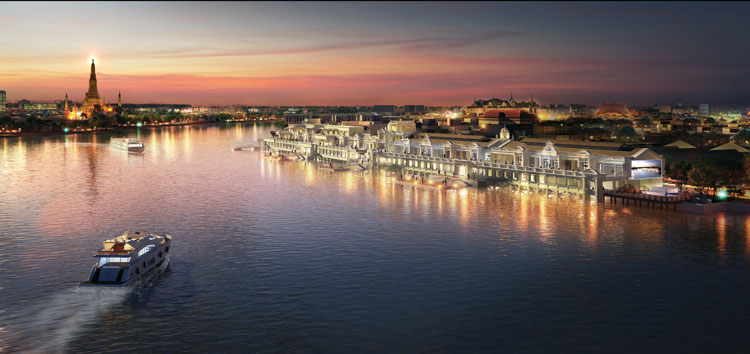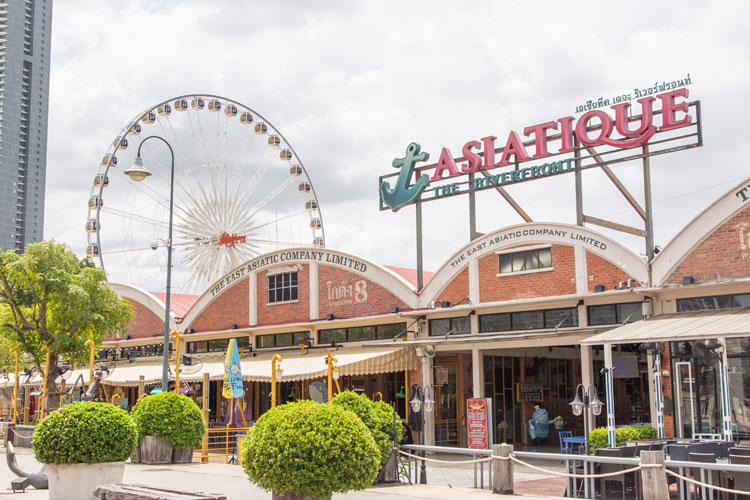10 must-see piers if you want to spend a day exploring the riverside
Enjoy the Chao Phraya at its best.
Don’t miss the year’s best chance to experience all the culture of the Chao Phraya’s longest historic riverbank. In collaboration with ASEAN's Cultural Year and in honor of Loy Kratong (Nov 11), the fifth Bangkok River Culture Festival will be held Nov 9-11.
Throughout the weekend, centuries of history and tradition will be on display up and down the river. There will be opportunities to make Buddhist merit, float kratong lanterns, tour famous sites, dress up in ancient outfits, shop for traditional crafts, meet famous artists, sample food from all over Thailand, hear bands from leading universities, and enjoy nightlife activities with breathtaking views along the river.
2019 is especially felicitous in Thailand because it marks a new era, with the official coronation of King Rama X. The kingdom is also honored with chairmanship of ASEAN in 2019, and it designed the river festival, in part, to lead the way as the Southeast Asian organization celebrates Cultural Year. The event is also a historic landmark—because while Bangkok has celebrated river events before, adding Wat Rakhang makes it the largest Chao Phraya river event ever.
Admission to all the piers and events is free, and shuttle boats (which are also free) run regularly between all the locations.


The river festival is the only annual event where visitors can pay respects to five different historic temples at night. A good place to begin is at the “Temple of the Bells”—the northernmost of the five temples, and one of the oldest sites too. Wat Rakhang was an Ayutthaya era fixture; guiding traders from the sea to the Siamese capital upriver. It is often overshadowed by its more famous neighbors (like Wat Phra Kaew) but it is quite popular for merit-making, and it is even believed that hearing the sounds of the temple’s bells brings a person both fame and a good reputation. You can also pay respects to the great monk Luang Pau Toh, a longtime resident of the temple. A special Thai-styled outdoor cinema will be installed by Bangkok Art Biennale (BAB).

“The Temple of the Dawn” drew King Thaksin to the Thonburi west bank, on the heels of Ayutthaya’s destruction and collapse. The ancient Hindu temple also inspired the king to begin a new era in modern Bangkok. It’s one of Thailand’s most famous sites, and its beauty still pays tribute to the dawn of a new capital and new kingdom. During the festival you'll have a rare opportunity to visit at night, and witness the breathtaking sight of the temple lit up by a candlelight procession. Throughout the three days, traditional Thai flower arrangements will also be on display.

Directly across the Chao Phraya from Wat Arun is the temple which inspired the Koh Rattana Kosin era, also known as the Temple of the Reclining Buddha. When King Rama I moved the capital from the river’s west bank to the east bank, Wat Pho was the largest and most famous temple. The king built Wat Phra Kaew next door, and filled Wat Pho with treasure he inherited from Thonburi, and statues he rescued from Ayutthaya. One treasure not to miss at the festival is a replica of the Buddha's footprint, which will be lit up in a special ceremony. The temple will also decorate and light a sacred Bodhi tree.

Though Wat Rakhang’s bells are more famous, Wat Kalayanmitr has Thailand’s largest bell—a 13-ton triple-cast behemoth, crafted with the aid of Japanese technicians. The temple also has one of the largest Buddha statues in Thailand, Luang Pho Tho. Both the temple and the statue are important destinations during Chinese New Year celebrations, and Wat Kalayanmitr will celebrate that heritage at the event with auspicious red candles available for all.

Just south of Wat Kalayanmitr, tucked next to the Phra Pokklao Bridge, is one of the most famous chedi stupas in Thailand. It is brilliant white and a striking riverfront landmark, which was built and dedicated to King Rama III. The temple celebrated its 190th anniversary last year. The chedi holds Buddha relics, and a special lighting ceremony will be held during the river festival. You can also participate in a DIY workshop, and make your own red moo kra daad paper mache piggy bank with a local craft artist.

Located across from Wat Prayoon, the Yodpiman Riverwalk is set on one of the most historic and beautiful bends in the Chao Phraya River. It was a nautical gateway in the Ayutthaya era, a center of trade in Thonburi, and grew to a vital crossroads during the Rattana Kosin era. Today it fronts one of the world’s largest flower markets, and includes many boutique shops, and a host of high-end dining options. Visitors are encouraged to take a stroll back in time along the Riverwalk, while admiring the views of the Chao Phraya River at night.

Many Chinese immigrants settled along the banks of the Chao Phraya River during the early Ayutthaya era. They were largely traders from the south, and one of the best-preserved pieces of local culture is Lhong 1919—a restored 3,000 sq.-meter port that includes a beautiful mansion, plus 13 stores and craft shops built around an ancient shrine dedicated to Mazu, the Chinese goddess of the sea. The river fest is an ideal opportunity to get a glimpse of ancient Chinese civilization on display today, with traditional instrument performances, mural paintings and even a spectacular Silver Dragon Dance. There will also be a jazz band.

Located at Level G, ICONSIAM, SookSIAM is one of the best places in the country to experience the different regional cuisines, arts and crafts of Thailand. The indoor city is an architectural wonder in itself, bringing together over 3,000 distinct businesses from every one of Thailand’s 77 provinces, under one roof. The space is further divided into seven zones, and furnished and decorated by 200 local artists. It is an unrivalled collection of Thai wisdom, tradition, culture and history, mixed with modern luxury amenities. ICONSIAM will be celebrating its first anniversary at the event, with a mini-concert by renowned singers. Another highlight will be Sook Somwang—the chance to make a wish while floating a kratong out onto the river.

One of the Chao Phraya’s newest and largest riverfront developments is Asiatique—a former international port and warehouse complex, now converted into over 1,500 boutiques and 40 restaurants. (It’s a great place to try Thai seafood). Its Ferris wheel is also a river landmark, and its arts offerings include live music, cabarets, classical puppet shows and even staged Muay Thai theatre. A traditional Thai temple fun fair will be held all three nights of the cultural festival, with a different concert featured each night—the Sincharoen Brothers (Nov 9); Praw Kanitkul (Nov 10); and Nont Tanont (Nov 11).
For more please visit: riverfestivalthailand.com & fb.com/riverfestivalthailand

Advertisement